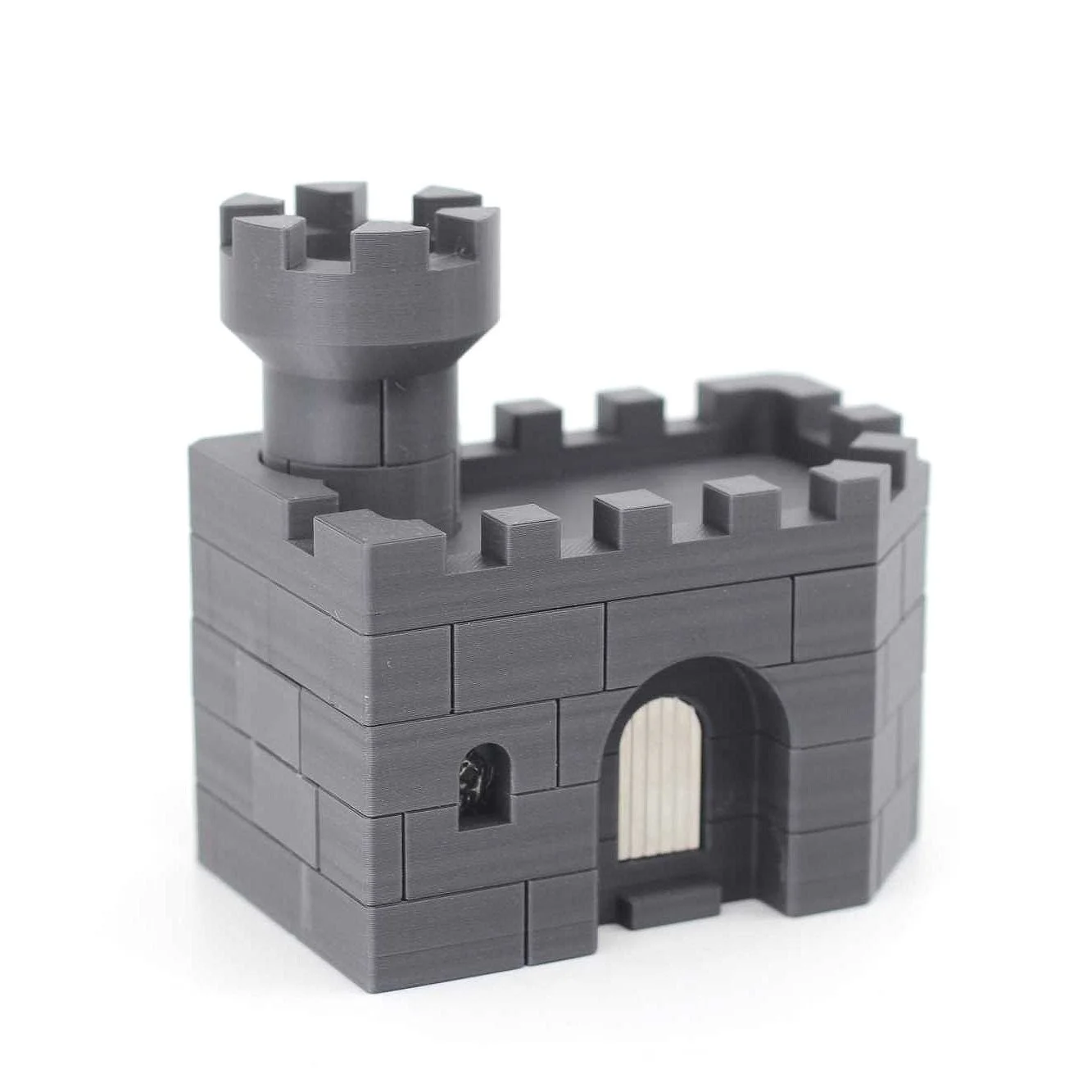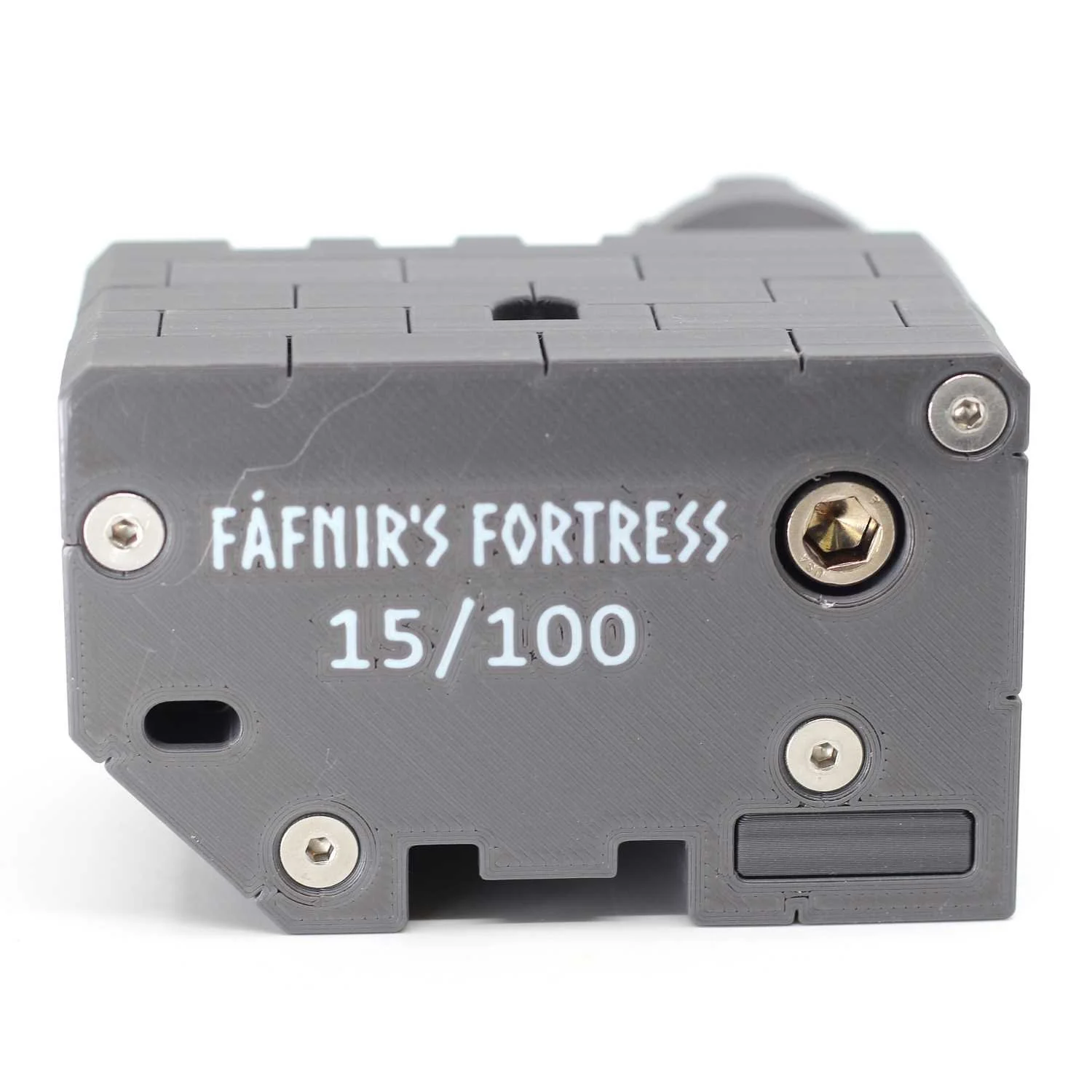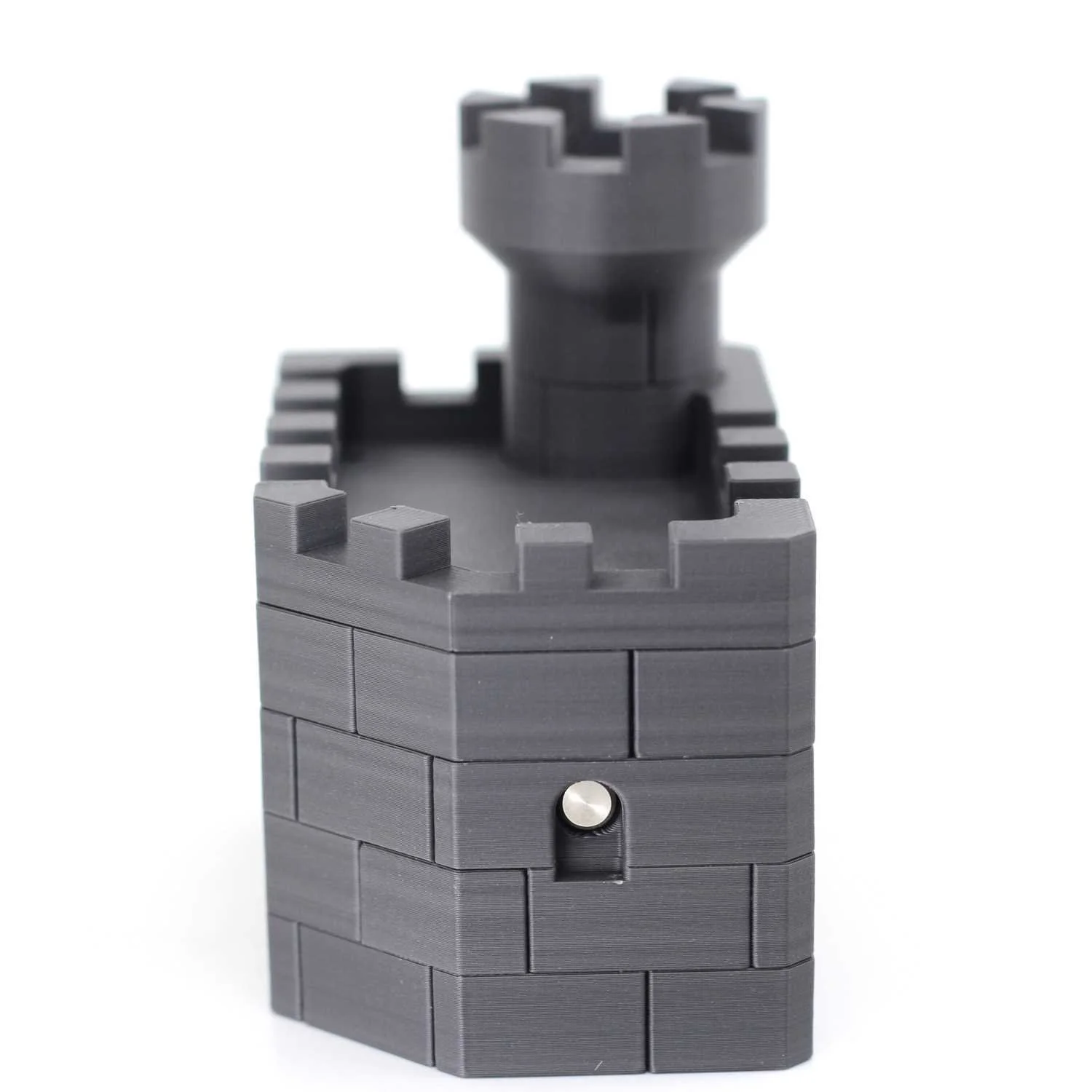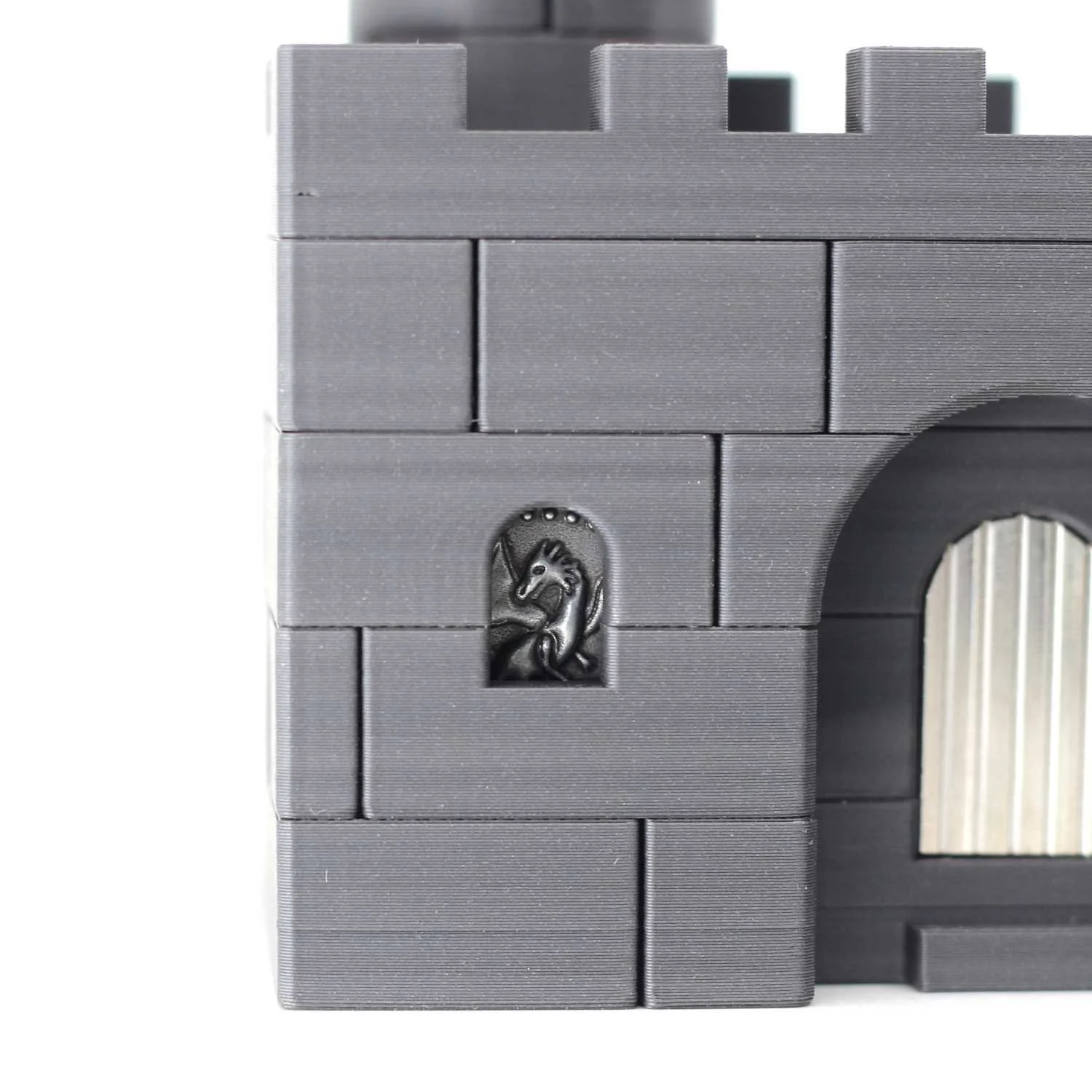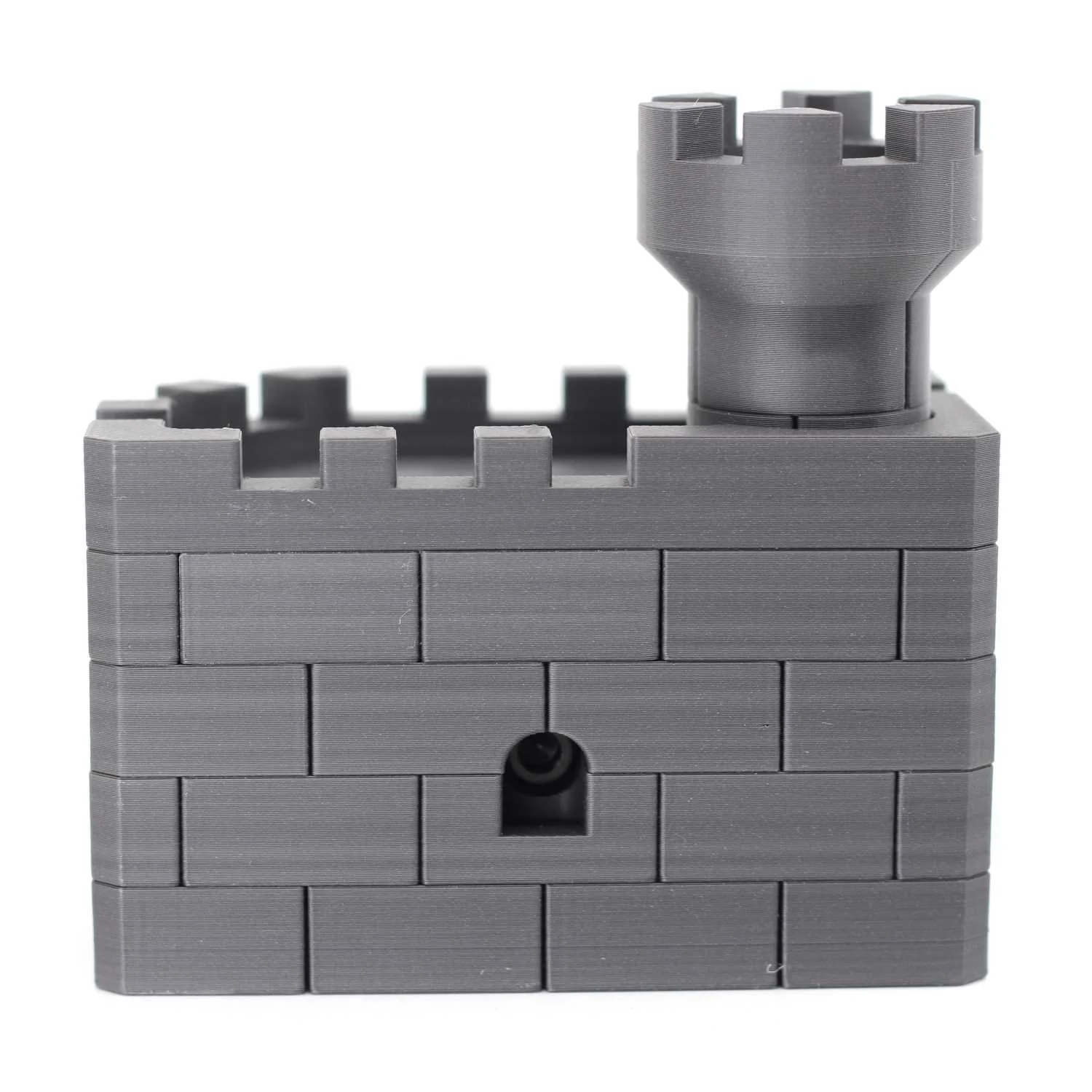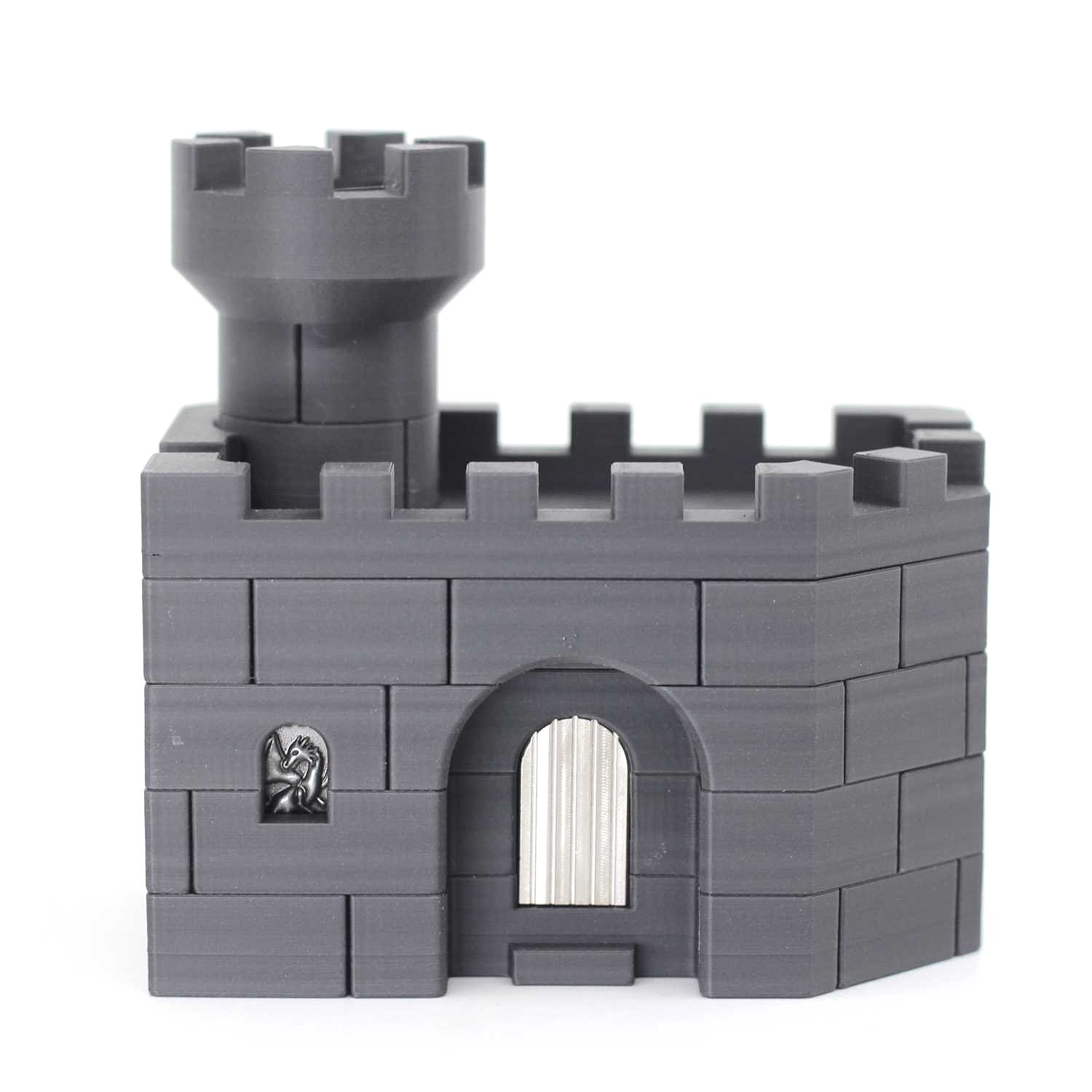Dragon Slayer
Fafnir’s Fortress
Fafnir's Fortress by Luke Waier
The Volsunga saga, dating from the late thirteenth century, is considered the most important of Icelandic tales of antiquity. It contains one of the many heroic stories of Siegfried (Germanic), or Sigurd (Norse). In those ancient, fabled times, Hreithmar was a sorcerer. His son Otr was accidentally killed by Loki, and the gods repaid him for his loss with a golden treasure and a magic “ring of power” (Tolkien was well versed in this influential myth). Of course, the ring was cursed, and brought misfortune. Hreithmar’s sons Regin and Fafnir killed their father for it, and Fafnir went even further, turning himself into a dragon to claim and guard the treasure. His brother Regin, perhaps with help from Odin, convinced his nephew Sigurd to slay the dragon, and then had his own plans for Sigurd as well. But the gods play games, and granted Sigurd wisdom from the dragon’s blood, so that he learned of the plot, and killed Regin first.
foundations of folly
If you are of a certain mindset, it has the makings of a great sequential discovery adventure. Combine that mindset with some incredible mechanical engineering and fabrication skills, and it becomes one of the best and most talked about puzzles to end the last year. Castles are always a fun idea for a puzzle adventure, and there has been at least one legendary puzzle adventure about a dragon as well. Luke Waier, a mechanical engineer from Houston, Texas, is the master storyteller behind the sensational new creation Fafnir’s Fortress. He has recently discovered an audience for his incredibly puzzling skills.
don’t brick it
“I’ve spent about the past 15 years designing and building things as a mechanical engineer. Primarily I work on developing tools and machinery used in specialized manufacturing processes. So, I have a good understanding of different manufacturing processes and materials.
Luke wins with Legos
Courtesy of Luke Waier
Don’t mess with Luke’s robots
Courtesy of Luke Waier
I’ve considered myself a very creative person my entire life. As a child I was frequently crafting things out of paper and drawing things like invention ideas or architecture, and at one point I got into intricate mazes. When I was around 10, I really got into Lego. I even won first place in a local Lego building competition. I dabbled in various other creative outlets like making board games, composing music, coding simple computer games, and playing with stop motion animation. In college I got into robotics and won or placed in a few collegiate robotics competitions.
this bot can shred
Courtesy of Luke Waier
she said yes
Courtesy of Luke Waier
15 years after the robotics days, I only just discovered the world of mechanical puzzles a few years ago. I was working on designing a safe that would be extremely resilient to theft, just for fun, and researching that eventually brought me to puzzles when I started getting solve videos recommended on YouTube. It became instantly clear that the blend of mechanical design, craftsmanship, creativity, and storytelling was the perfect fit for me. Basically, it was love at first sight.
Courtesy of Luke Waier
The idea for Fafnir’s Fortress originally came from an idea to make a puzzle in a sort of layer-cake design, where you have a number of blocks stacked on top of one another and you can remove (machine) portions of each layer to create various mechanisms. Naturally this began to resemble layers of bricks, and that led to the idea of a small castle-themed puzzle.
here there be dragons
I decided I wanted to incorporate the theme of a dragon… because why not. Then after some research I learned about the Norse legend of Fafnir. The elements of the story worked well with what I wanted in the puzzle, and of course the name works as a nice alliteration.
I was already a fan of The Hobbit and The Lord of the Rings, so when I read about this myth it became apparent that it likely served as some inspiration for author J.R.R. Tolkien. Basically, Fafnir was the original treasure-hoarding dragon. The Norse myth also tells of dwarves and a cursed magic ring. So yeah.
Courtesy of Luke Waier
Originally, I had planned to make the puzzle entirely out of machined metal components. I was first introduced to 3D printing in 2006 and mostly used it for prototyping purposes; however, only recently the quality that can be achieved with 3D printing has become good enough that I decided to release the puzzle with the main body made with printed parts. This significantly reduces the cost, which places it in a price range that is reasonable for many more people to enjoy. Despite being printed, I try to get the best possible quality out of my 3D printers and pay close attention to both design elements and print settings. I also incorporate what I know from metalworking to create aesthetic and functional elements that you don’t typically see in a 3D printed puzzle.”
Courtesy of Luke Waier
Luke certainly knows what he is talking about. The production value of Fafnir’s Fortress is exceptional as a mixed media machined and printed product. The castle is dense and quite heavy, thanks to Luke’s use of 100% print infill, something not commonly done for prints. The result, though, gives it a very high quality feel. The castle is also rather compact, which makes it easy to handle and manipulate, and which becomes more and more impressive as the many, many layers of the adventure are uncovered. Luke packed the whole story into this tiny castle, in a way that makes many people think that after a decent number of steps, the adventure might be finished, when in fact it has only just begun.
I’ll be back
The mechanisms are incredibly well done, and often extremely sneaky. There is really nothing hidden, so solving the puzzle is a matter of wits alone, which makes the adventure all the more satisfying, even when you need to pray to the gods for a little help now and then, just to confirm you are on the righteous path. Slaying dragons takes a little faith, after all. It’s no surprise that Fafnir’s Fortress was nominated on many best of the year lists, and Luke has earned himself a legion of new dedicated fans for his future quests, and it looks like there will be many to conquer.
holding down the fort
“I have a few puzzles in prototyping stages for release hopefully this year. All are themed sequential discovery puzzles, similar in complexity to Fafnir’s Fortress, and all will continue to blend 3D printing with metal components to keep the price reasonably low and “puzzling ROI” high. One project I am particularly excited about is a multi-part SD adventure, themed on the Gold Rush era of the American West. The puzzle itself is modeled on a steam train. You must solve each of 5 train cars, starting with the engine and working your way towards the caboose. Each car is a self-contained SD puzzle with its own objectives. You don't have to buy the whole series. However, if you choose to “stay on the train” and purchase additional train cars as they become available, you will use items obtained from the previous puzzles in the series. Expect theme-relevant items, prizes, and surprises, culminating in a grand prize obtained in the last puzzle of the series.”
Dragon Punch by Robert Weeks
There aren’t many great dragon-themed, “treasure under the mountain”, Nordic quest cocktails that exist. Which isn’t to say that many such themed cocktails haven’t been made, just that I haven’t designated them as great. The Treasure Chest cocktail was one that made the list in the past, and I have also resorted to creating drinks that suit the need on occasion. But I found a perfect modern classic to compliment this timeless ancient tale, to add to the great list. Fafnir (and Sigurd) deserve a bit of greatness.
how to tame your dragon
Created by Robert Weeks, general manager at the Coldroom in Montreal, Canada, the Dragon Punch is actually a single serve cocktail rather than a large scale punch. The punch refers to the wallop it gives you from the one-two mezcal-tabasco combo. Weeks envisioned his drink as a smoky, spicy, herbal, “punchy” Mai Tai variation. To me it reads like a Last Word variant as well, but the almond syrup (orgeat) definitely give it that tropical vibe. Tabasco as a cocktail ingredient is highly effective at delivering a dose of heat, but Weeks comments that he loves the vinegar flavor for his cocktails as well. “Tabasco is essentially a cayenne pepper shrub which is why it’s so good in drinks”. I used a chile pepper tincture which brings heat but a different flavor and without the vinegar, so I’ll have to try it again with Tabasco. You won’t be breathing fire exactly, but it gives a nice kick to an already tasty drink. Here’s to adventure! Cheers.
this pair pack a punch
Dragon Punch by Robert Weeks
1 ½ oz mezcal (Del Maguey Vida Clasico)
½ oz yellow Chartreuse
1 oz lime
½ oz orgeat
2 dashes Tabasco
Shake ingredients together with ice and strain into a coupe. Cucumber roll garnish.
explore more:

